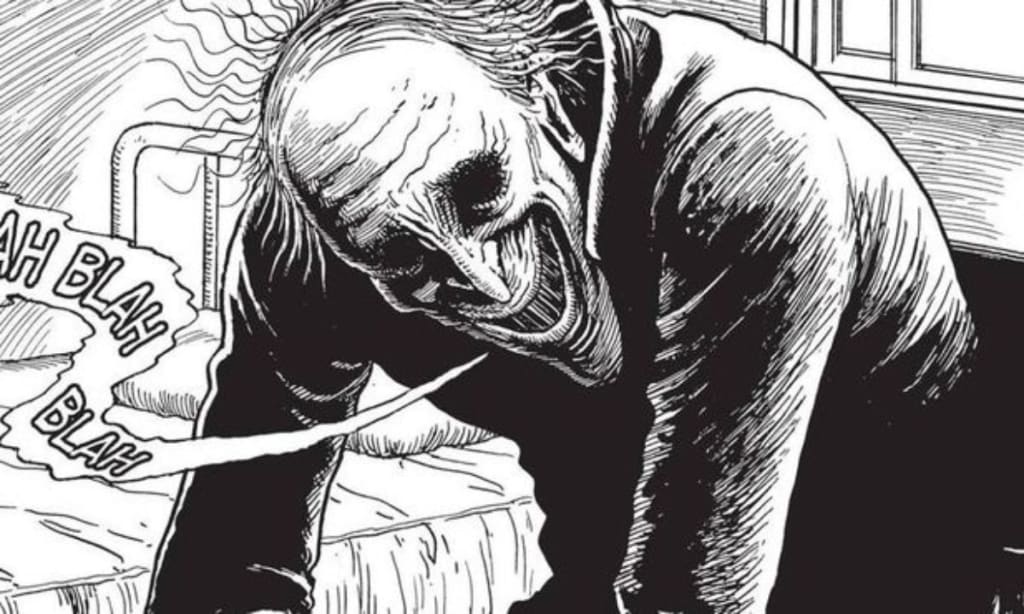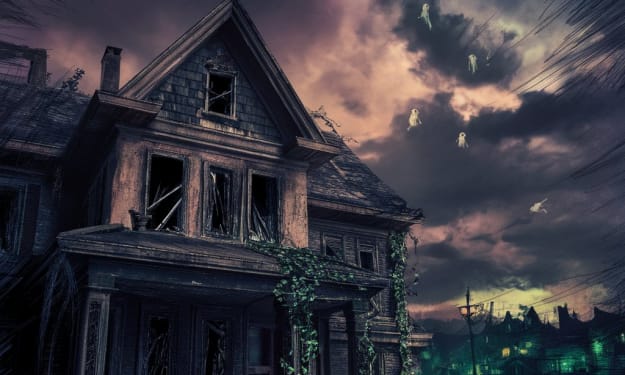The Broad Creativity of Junji Ito
How this graphic artist has the balance horror with simplicity and complexity.

Junji Ito has entertained us with eerie ideas of the world around us to rethink what we never fathomed to fear.
In the genre of horror, there are many ways to elaborate on some form of fear or terror. It can be simplistic with a rising tension that has you intrigued to find out more despite knowing it will be grotesque and grim.
But the one thing that I like about Junji Ito, even though he’s known as being a graphic artist that makes stories that turn your stomach, not every story has an ending that would be horrific or turned out to be horrific, the goal of some of his stories doesn't have to be intended for fright.
Horror shouldn't just be shocking, it should be intriguing to wonder why this weary outcome happened.
There are a couple of stories that come to mind to bring up how these short stories made a long-lasting but simple impact to analyze that there is a balance of unsettling and intriguing to dissect.
Long Dream
Long Dream was one that I revisited with a different mindset than originally, I didn't care for it at the time that I read it. understand it and read it, and had the most powerful ideal of the extant of what can be conjured in the human mind based on dreams.
First, it was alarming by the sample photo of the patient that looks like he got plastic surgery to look like Roger from American Dad!
The character thoroughly believed that the other patient was his wife and lived a whole life in a dream of their marriage together. Then his whole body changed with the self-evolution, it gives an idea that I've rarely seen to think how the power of the mind can work, just like the saying mind over matter or any other metaphors about the mind.
I read his author's commentary about how it was a story he was told by his oldest sister who was told the following,
"It was the idea that when a person dreams, it's just a moment. That no matter how long the dream might be, objectively, the time you're dreaming is a mere instant."
It's interesting to have that in mind to question the fiction of our reality within questioning reality. What is, what will never be, what could happen, what has already happened? How we can fabricate a fiction that seemed to be believable?
Hanging Balloons
When I first read hanging balloons I originally thought that it was a story about celebrity suicide. I felt like it correctly portrayed how fans react to the death of a celebrity and quickly point the finger at someone else because they refuse to face the facts of true hard evidence. Similar to the ongoing conspiracy surrounding Kurt Cobain's death or George Reeves's questionable death.
I had to re-read to see that it was originally about how the curse chose the young celebrity and how it was built up to its manifestation of a curse because the main character not knowing that the curse had gripped its ties to an already gotten celebrity and just happened to work out like that for the curse to work. So these "blimps" or "balloons" are just a face that wants to take out the very thing that they look like, sort of like Invasion of The Body Snatchers.
I'm not technically wrong about how the idolizing of celebrities can get out of hand. There's even a mention in the book about how psychosomatic individuals can get. We praise them so vehemently that if a situation like this happened, we asked for it because of the blind praise that fed an unfathomable horror to happen.
The idea for commentary or the real analysis for this story is a toss-up, you can take your pick
Earthbound
I feel that has multiple interpretations as to why and what compelled these characters to stand for their secrets.
Throughout the town, people are standing in designated areas and refusing to move, not that they won't move, but they can't move. Same with Uzumaki, there was a slow acceptance of the unusual ambiance. The townsfolk that are compelled to be still, aren't in any sort of fear, it's an acceptance of guilt as opposed to other stories like Tell-Tale heart or Tony Goldwyn's character in Ghost to see the frantic nature of guilt, this one uniquely offered the acceptance.
It's not entirely specified, this was one of the first curse stories that Junji Ito did that has the idea about the secrets of sins that will be found out.
Is it a curse? is it an act of God? Is it a manifestation of madness that grew into a curse? Was it a commentary about questioning the motives and morals of those you thought you knew?
It's a story that has an ending with questions that are left to be questioned and to wonder how far guilt can go.
The one thing that I've taken out from reading Junji Ito's stories is he can convey exactly what he wants and it doesn’t take away from the identity of his work while having the option for open interpretation. That's what horror can do, there are different ways to bend it with other genres or ideas.
Most creators create something not only for the point to be taken but how far the point can go. John R. Dilworth, the creator of Courage the Cowardly Dog has gone on to state that anytime he has been asked a question for his show he has been told of different scenarios that he loves to hear because he feels that art doesn’t have to have a definitive answer.
The same applies to Junji Ito's work, there's always room for different answers to dissect.
His work is so constructed that it needs to be re-read to see if there is anything within the art or the dialogue that was missed. His work can be read over and over again, and the same feelings of unease are the same reaction while seeing any other meaning. It's almost like a Where's Waldo for horror to see if there was anything else in the crazy chaos of the story to be found.
I look at his work not in the desire to be shocked by sinister elements but to be intrigued by how a story is made, for anyone that is looking to create a horror story, this is where the horror homework starts.
There's a balance to Junji Ito's short stories, it never feels like it draws too long on the shock value and builds up the point of the shock without slowing down or going too fast that the payoff isn't achieved. He's given us something that we haven't had in a long time, to have a piece of macabre material that stayed with us to ruminate on, not crammed in our cranium.
Horror is tricky these days because of common tropes and dulled ideas. Junji Ito is one of the first horror creators we've had in a long time that made something different for the horror that can deliver something that is disturbing while being intriguing. Having a horror story that can be re-read and inspired for future generations that want to dive into the dark side.
About the Creator
Samantha Parrish
What's something interesting you always wanted to know?
Instagram: parrishpassages
tiktok: themysticalspacewitch
My book Inglorious Ink is now available on Amazon!
Enjoyed the story? Support the Creator.
Subscribe for free to receive all their stories in your feed. You could also pledge your support or give them a one-off tip, letting them know you appreciate their work.






Comments
There are no comments for this story
Be the first to respond and start the conversation.